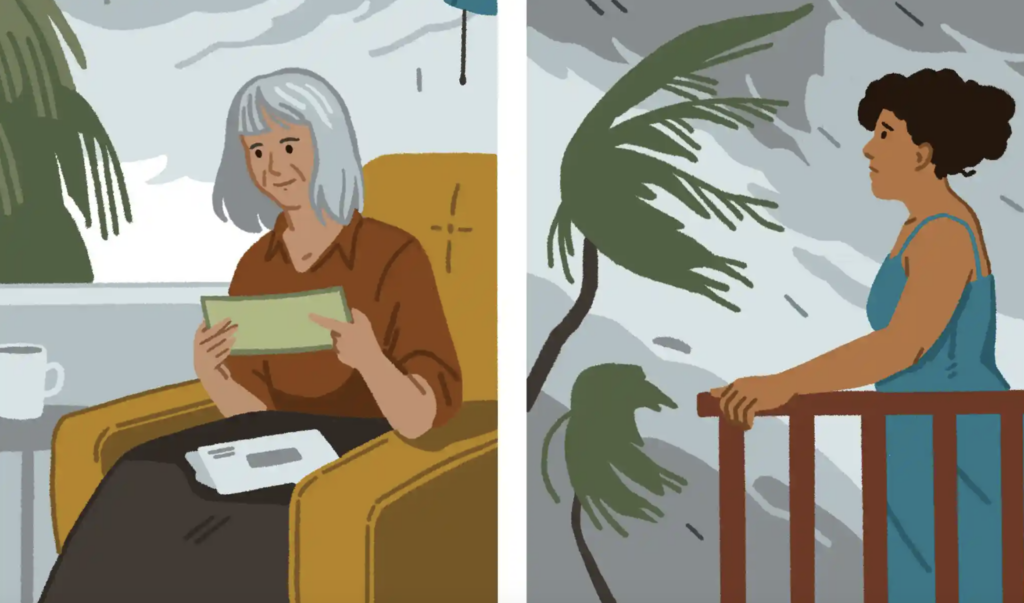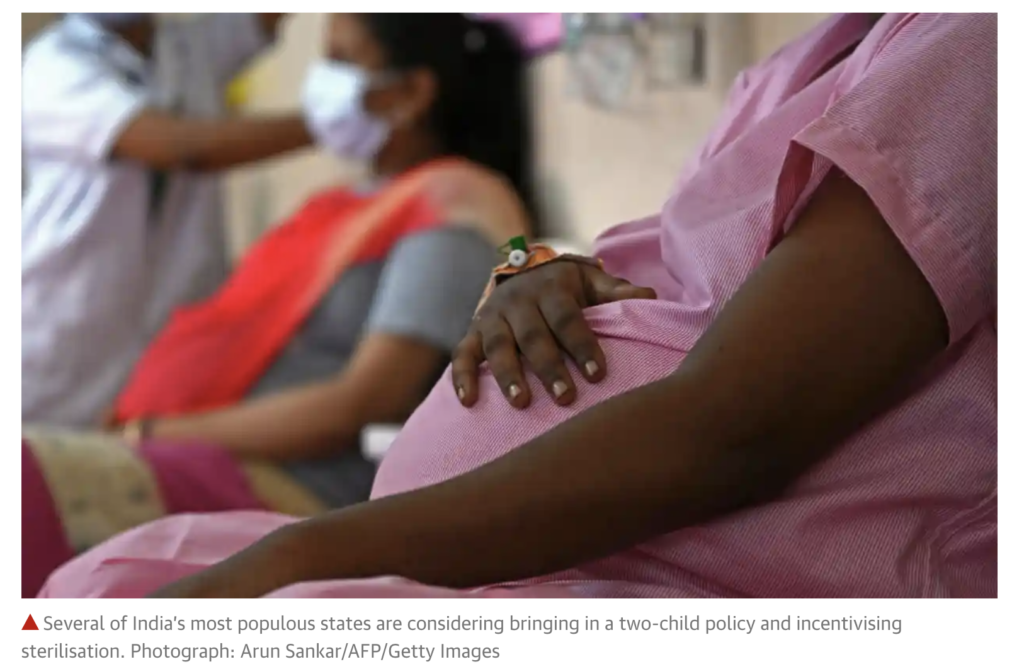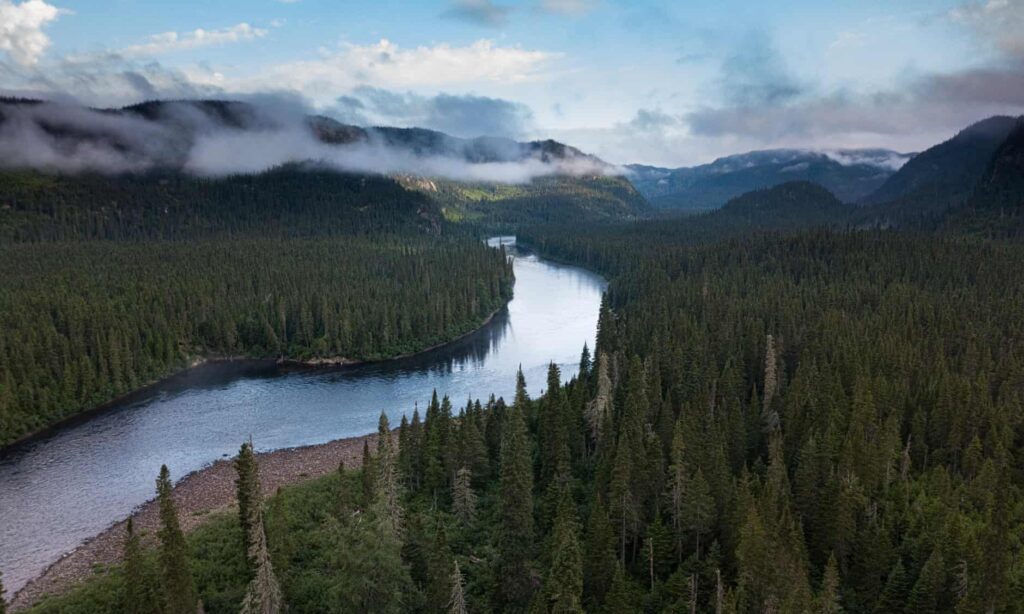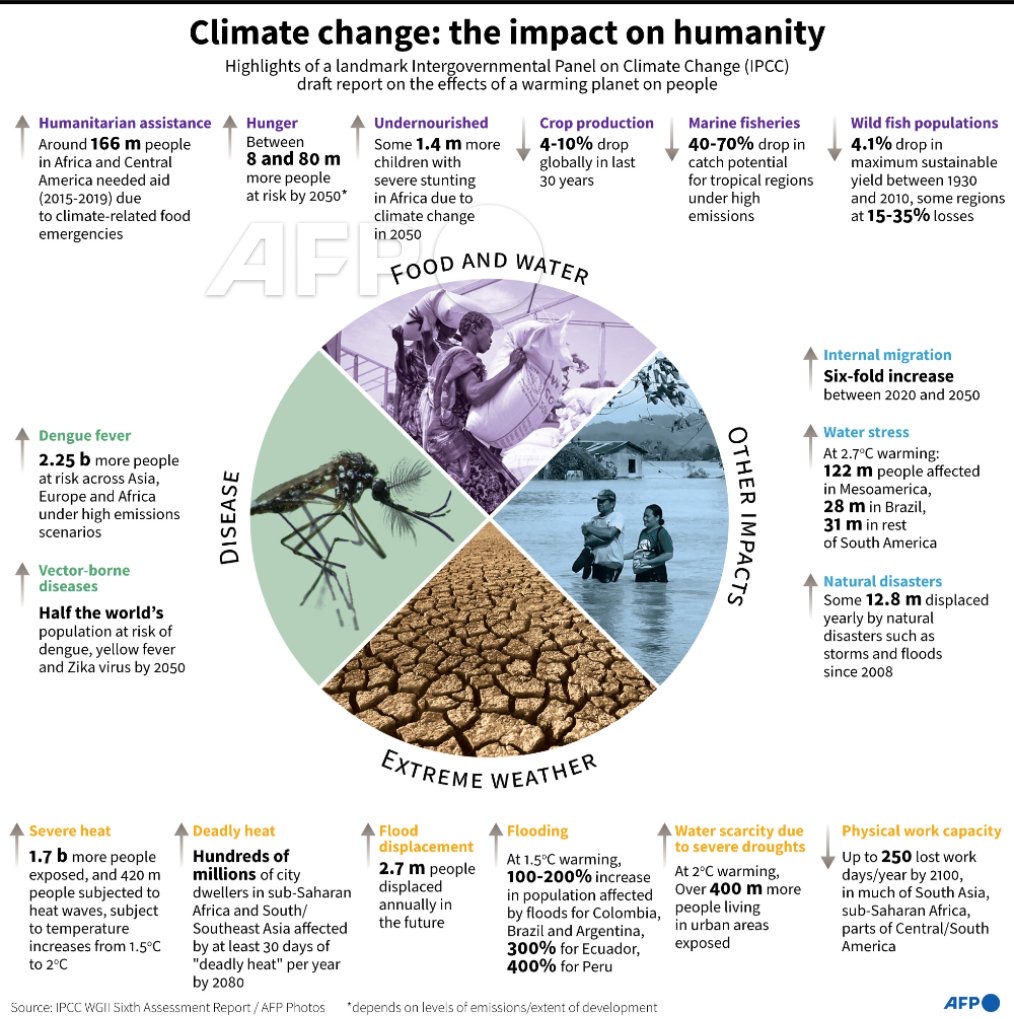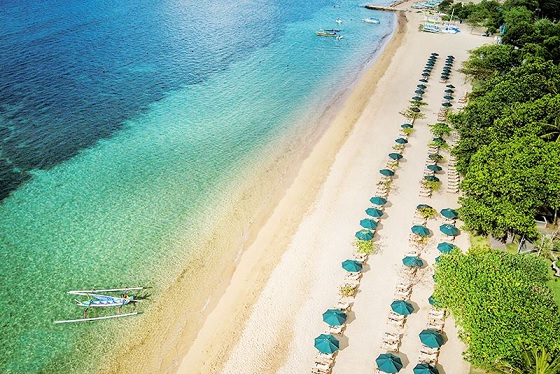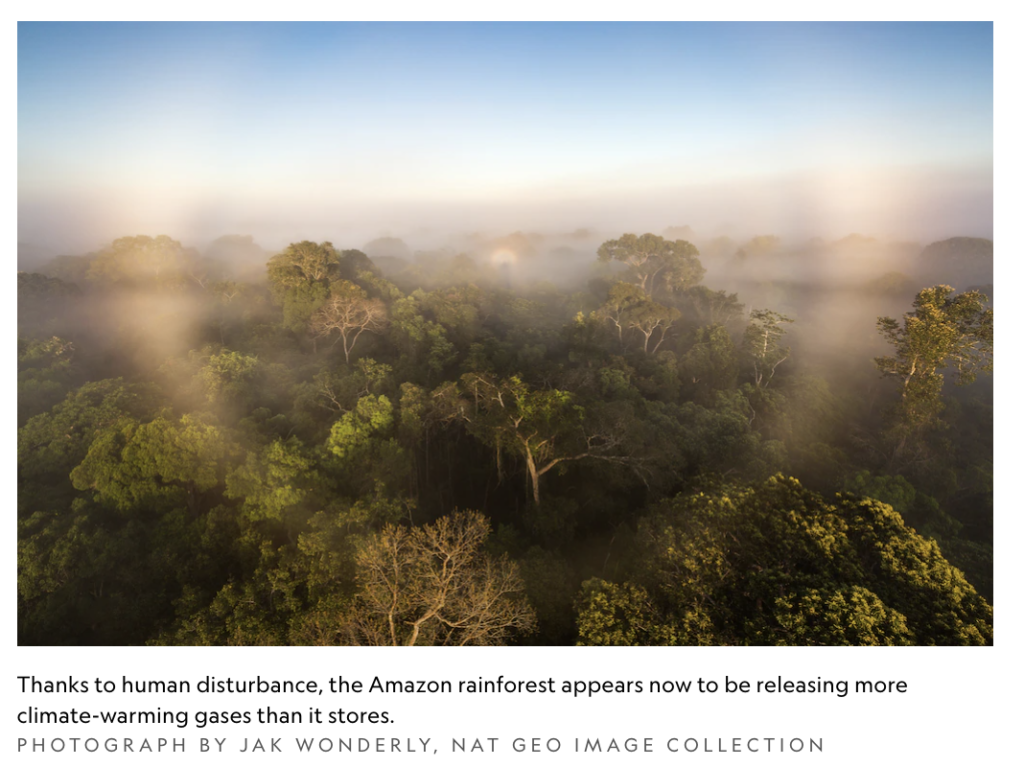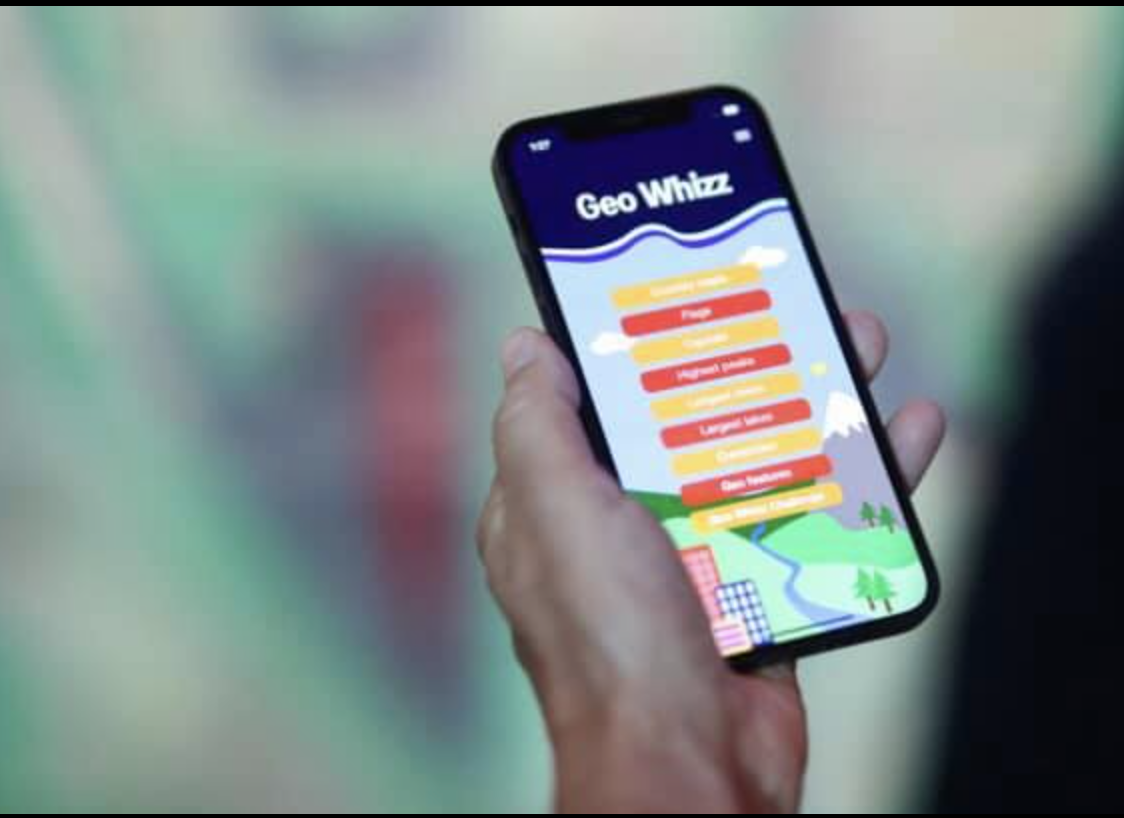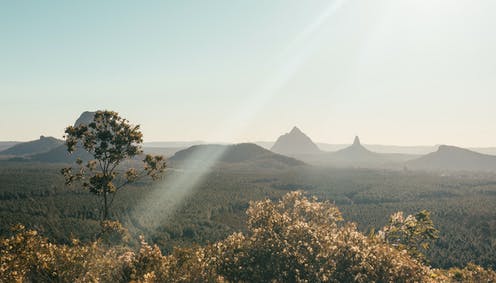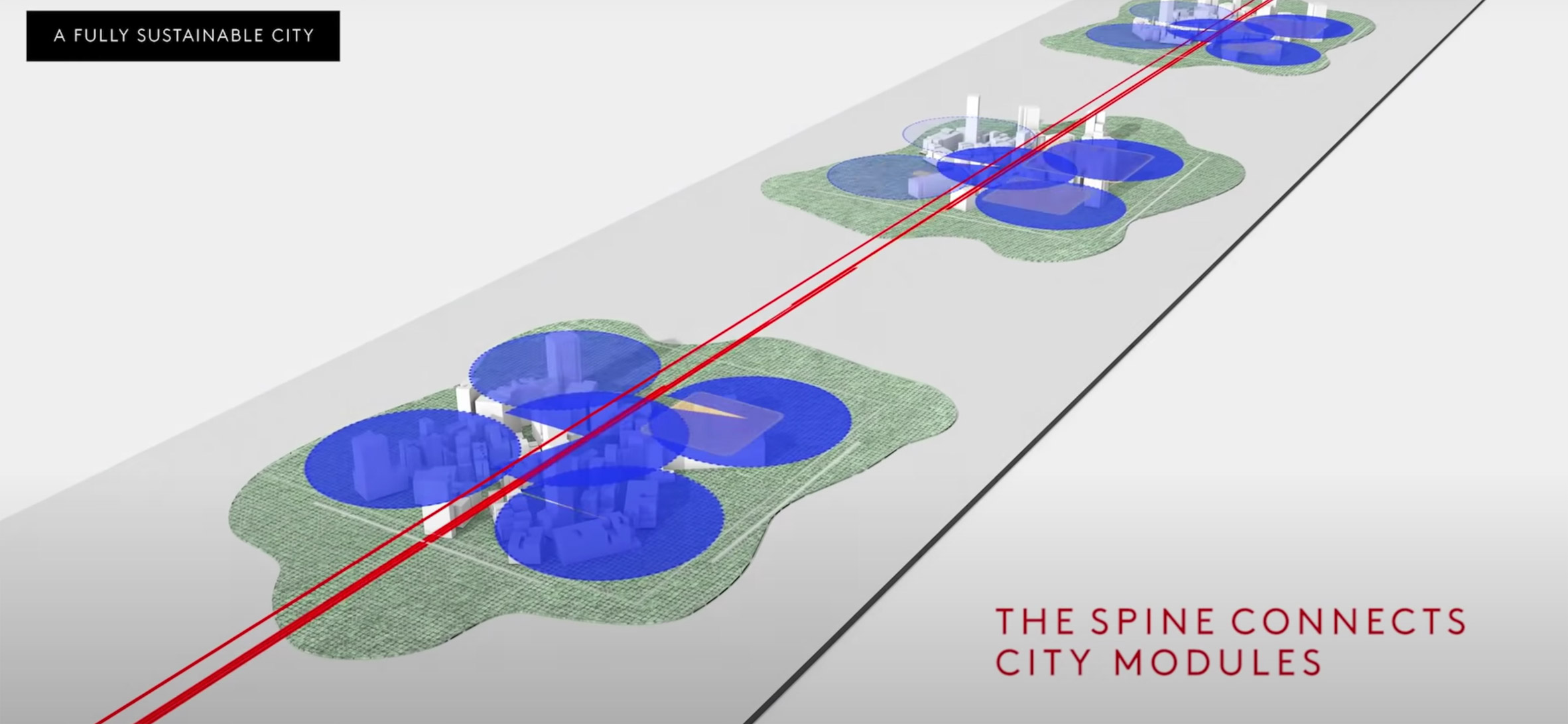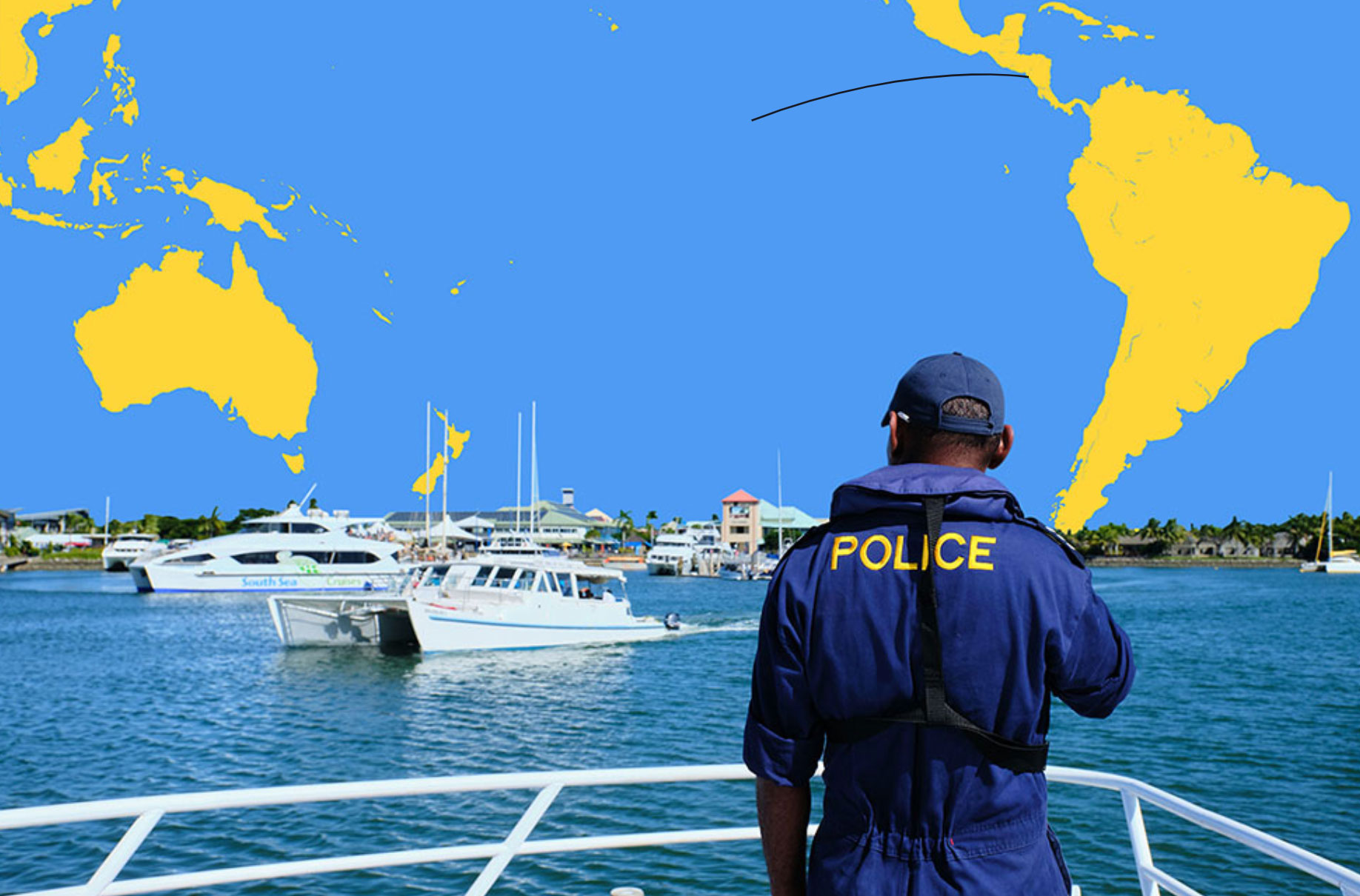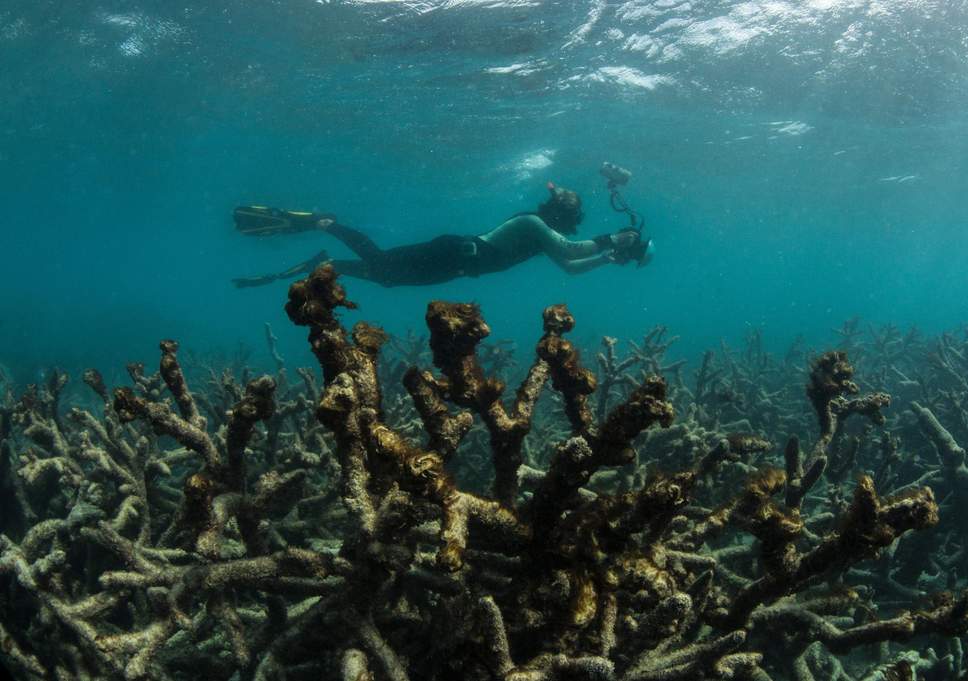Check out this link to see and hear from Eleanor (and Bronwyn – in absentia)
Category Archives: General resources
RESOURCES from the Curriculum Change hui yesterday will be uploaded here.
Public spaces in AKL city – a teaching and learning resource
A new teaching. learning and assessment resource has been provided to us from Hannah Wood at Selwyn College.
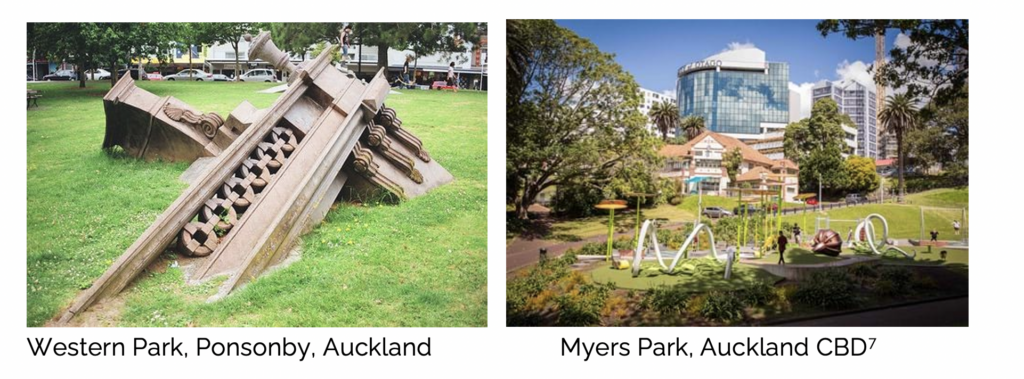
It is focussed on Public Spaces in Auckland City – with the CBD as the focus
You can find it here.
Thank-you Hannah.
How natural disasters benefit rich people but make the poor poorer – an illustrated story
Geography in a jar
Sorry, but you do not have permission to view this content. Log in, or join the AGTA!
Make a 3 D model
Whilst we have been in lockdown Level 4 I asked my class to make a 3D model of the Lee’s Migration Model.
I wanted to get them off their laptops and doing something fun. They had to use material lying around the house.
I wasn’t expecting much from the students but look at this.
I think this student really understands the model.
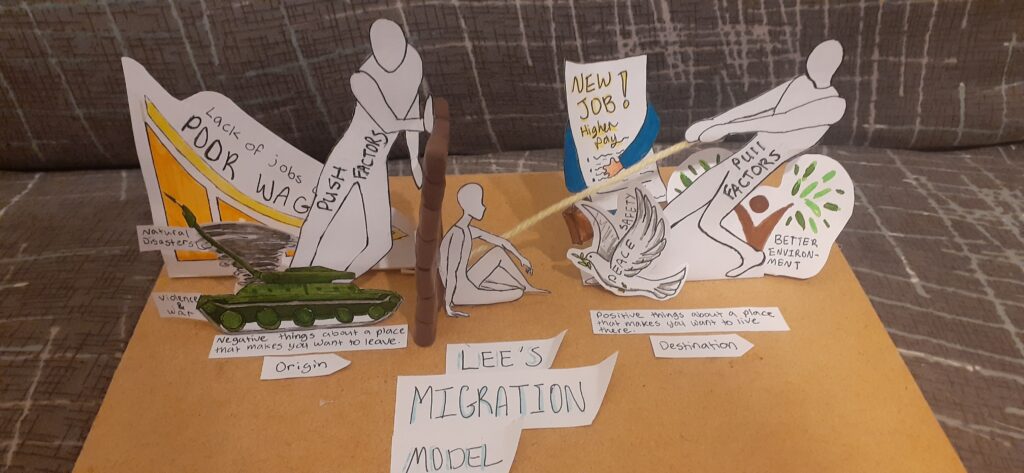
The Origins of Geography Terms

The vocabulary we use to describe landforms and landscapes comes from languages around the world. It’s a prevalent example of how we rely upon the traditional ecological knowledge of peoples who know their lands best.
Here are some of the etymologies:
Alpine: From Latin Alpes “The Alps”
Archipelago: From Greek Arkhi Pélagos “chief sea” referring to the Aegean Sea
Atoll: From Dhivehi atholhu “palm of the hand”
Bayou: From Choctaw bayuk “small stream”
Billabong: From Wiradjuri bilabaŋ “watercourse that runs only after rain”
caldera: From Spanish caldera “cooking pot” referring to Las Cañadas caldera in the Canary Islands.
Cay: From Taíno cairi “island”
Cenote: From Yucatec Maya tsʼonot “accessible groundwater”
Drumlin: From Irish droimnín “littlest ridge”
Fjord: From Norwegian fjord “lake-like”
Geyser: From Icelandic Geysir “one who gushes”
Isthmus: From Greek isthmos “neck” referring to the Isthmus of Corinth
Jungle: From Sanskrit jaṅgala “arid”
Lagoon: From Venetian Laguna “lake” referring to the Venetian Lagoon
Mangrove: From Guaraní mangle “twisted tree”
Monadnock: From Abenaki Menonadenak “smooth mountain” referring to Mount Monadnock
Oasis: From Egyptian ouahe “dwelling place”
Savannah: From Taíno sabana “treeless plain”
Steppe: From Russian stepʹ “flat grassy plain”
Taiga: From Yakut tayga “untraversable forest”
Tundra: From Kildin Sami tūndâr “treeless plain”
Volcano: From Sicilian Vulcano, one of the Aeolian Islands
Map by Jordan Engel. As always, the Decolonial Atlas’ original media can be reused under the Decolonial Media License 0.1.
A contemporary Geographic Issue – Level 3
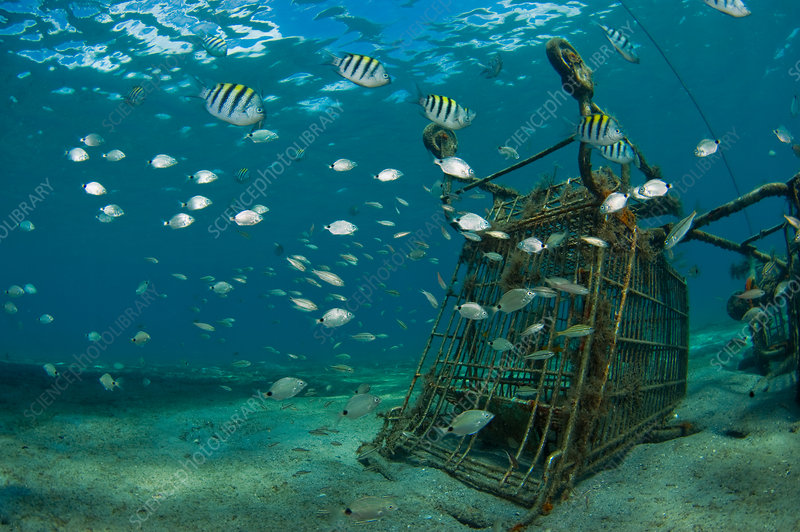
A combination assessment for Level 3 students – this resource activity combines both 3.6 and 3.7.
Check out the resources here:
Resource booklet
https://drive.google.com/file/d/1aHxbDR2rGbKW2qd1FsVOxVLiutKFptpT/view
Assessment tasks
https://drive.google.com/file/d/1D1CxTSF8QGlnjjGoHtaAoi2Dg8EYx-1z/view
and
Assessment Schedule
https://drive.google.com/file/d/12WD-Yt92_mQkOV160y-_m25Qbm3O3qJt/view
These were originally written by Duncan Bond. Duncan has given us permission today to distribute these to all NZ Geography Teachers.
We would like to thank Sam Fazio-Smith, Curriculum Leader Geography at St Margaret’s College who has provided her updated resources which are attached.
India states considering two-child policy and incentives for sterilisation
Should rivers have the same rights as people?
Milk and Money
This six part is available for viewing on The True Cost of Dairy in Aotearoa.
News exploring the dairy industry’s impact on the community, economy and environment of Aotearoa, and considering what a sustainable future for the industry could look like.
Might be a great investigation or issue to look at in your classes.
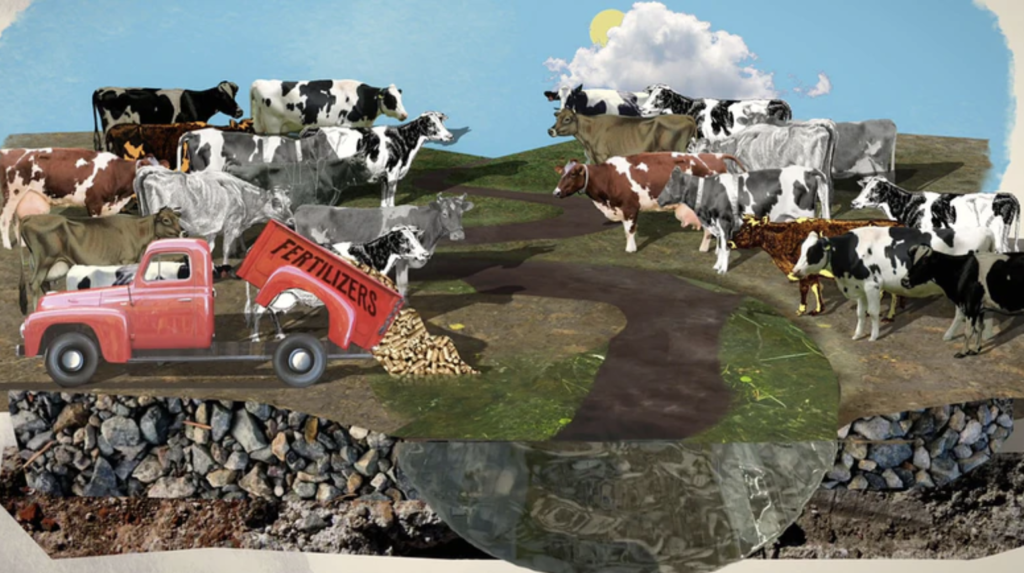
https://www.renews.co.nz/series/milk-and-money-the-true-cost-of-dairy-in-aotearoa/
Phase two of the review of Achievement standards ARE now out.
The revised learning matrix, course outlines and achievement standards has been published here today.
Check out the information and join us at St. Cuthbert’s College (Clouston Hall) on Wednesday 18 August at 4.30pm for a korero about the ideas and discussion about the proposals put forward by the Subject Expert Group.
The geospatial revolution
This is a great series:
and coming soon: Episode 5 (below is the trailer)
CLIMATE Change INfoGraphic – how will it impact HUManity?
Why GIS as a platform is revolutionary.
Sorry, but you do not have permission to view this content. Log in, or join the AGTA!
Where in Auckland?
Sorry, but you do not have permission to view this content. Log in, or join the AGTA!
Bali Tourism – all but gone?
This article in the NZ Herald the other day suggests that tourism in Bali is nearly dead.
Navigation
Tupaia – one of the most extraordinary explorers of the Pacific. His story was taken over by the narrative of Captain Cook, but now his life and significance around the Pacific is being told again…
First study of all Amazon greenhouse gases suggests the damaged forest is now worsening climate change
The first broad look at all of the gases that affect how the Amazon works—not just CO2—reveals a system on the brink.
This article is interesting – might be useful for any discussion on climate change.
Geo Whizz – a fun app for Geography teaching
Here’s a great geography teaching resource for all ages.
Geo Whizz is thoroughly researched and up-to-date for 2021.
It’s fun and free!
Click here to download: https://apps.apple.com/au/app/geo-whizz/id1541570163
#geo #geography #quiz #geographyresource #geographyquiz #geographyteacher #education #DigitalLearning #AppStore #maps #rivers #flags
Eastern Australia has hundreds of enigmatic volcanoes. New research shows how they formed
This is an excellent video clip about a sustainable city proposal in Saudia Arabia
Mohammed bin Salman, the crown prince of Saudi Arabia, has unveiled plans for a 100-mile belt of zero-energy walkable communities for a million people.
The linear city will have no cars or streets, with all residents living within a five-minute walk of essential facilities.
Bin Salman announced plans for The Line in a video where he described it as a “civilisational revolution that puts humans first.”
Interested? Read more here
Globalisation – a discussion on Radio New Zealand
Check out what Louise Richards (Chairperson of the BOGT) and Warwick Murray have to say about Globalisation.
Monte Etna Eruption
A short skills resource on the volcanic eruption on Mt Etna.
Thanks so much to Nick Moyle for this great resource.
Smuggling Drugs through the Pacific Islands
Illegal Drugs Transit through the Pacific Islands
A Formative Skills Exercise based on the cocaine trade through the Pacific Islands.
Nick Moyle, Cashmere High School
Stealing Fuel in Mexico
Sorry, but you do not have permission to view this content. Log in, or join the AGTA!
Resources from the old WikiSpaces website run by Team Solutions.
Sorry, but you do not have permission to view this content. Log in, or join the AGTA!
Resources that may be useful from Jean McCann
Coral Reefs
Flyer The global topic of Tropical Coral Reefs
Fold Mountains
Flyer for Global topic of Fold Mountains
The on-going deterioration and future sustainability of the Great Barrier Reef
Flyer for AS 91431 Issue of the sustainability of the Great Barrier Reef
The Issue: The Hauraki Gulf – an ecosystem under pressure
Water Issues and Environmental Change Workshop Resources
Sorry, but you do not have permission to view this content. Log in, or join the AGTA!
Resources from the workshop “Testing Times”
Sorry, but you do not have permission to view this content. Log in, or join the AGTA!
Making Geography fun
Sorry, but you do not have permission to view this content. Log in, or join the AGTA!
Colouring in Again are we? Resources and ideas from this workshop
Sorry, but you do not have permission to view this content. Log in, or join the AGTA!
Climate resources that might be useful for you in school
Sorry, but you do not have permission to view this content. Log in, or join the AGTA!
Ideas from the climate workshop –
Sorry, but you do not have permission to view this content. Log in, or join the AGTA!
The rich are getting richer and the poor poorer – workshop notes
Sorry, but you do not have permission to view this content. Log in, or join the AGTA!
Quick easy activities to explain about air pressure
Sorry, but you do not have permission to view this content. Log in, or join the AGTA!
Climate Change infographics
Sorry, but you do not have permission to view this content. Log in, or join the AGTA!
Promotional documents for Geography
Sorry, but you do not have permission to view this content. Log in, or join the AGTA!
Two fun revision activities – one skills and one general
Sorry, but you do not have permission to view this content. Log in, or join the AGTA!
Skills practice for students using a Manukau topo map
Sorry, but you do not have permission to view this content. Log in, or join the AGTA!


